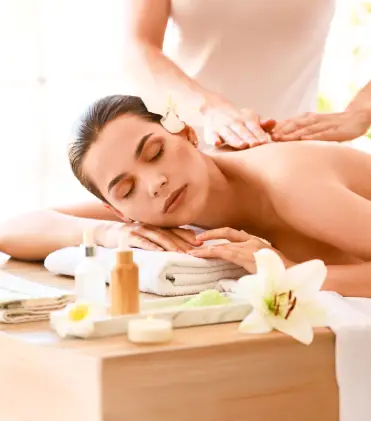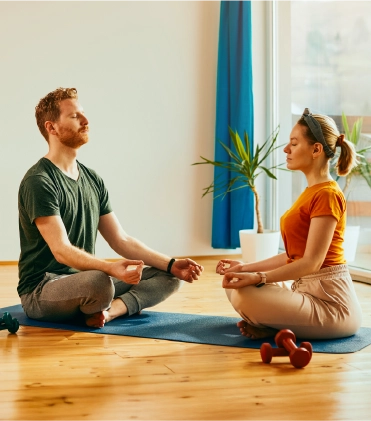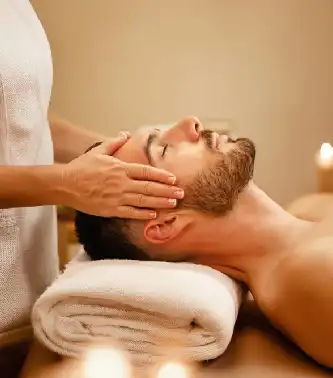What is the treatment?
Light therapy is a holistic treatment in which non-invasive methods are used to generate light deeper into the skin to improve mental, emotional, and physical health. It is also known as phototherapy. Light therapy was used to heal wounds in astronauts. In this therapy, the individual’s skin is exposed to natural or artificial LED light to regulate biological rhythms and treat certain medical conditions. Light therapy is commonly used to treat seasonal affective disorder, sleep problems, and skin conditions such as fine lines and psoriasis.
Philosophy/Origin
The use of light therapy originated in ancient Greece, where sunlight was believed to promote healing. Modern light therapy started in the early 20th century when Danish physician Niels Ryberg Finsen won a Nobel Prize for using light therapy to treat skin diseases. In today's world, skin specialists widely use this therapy in combination with creams and ointments to provide desired benefits. The treatment is made with the idea that light can affect circadian rhythms and promote healing processes at the cellular level.
Physical Benefits
Mental/Emotional Benefits
Long-Term Wellness
Long-term use of light therapy maintains a healthy cycle of sleep and waking, which promotes sleep quality. It also helps to reduce the symptoms of mood disorders like seasonal affective disorder or SAD. It is a type of holistic healing that is used to improve both mental and physical health.
Ideal Audience
Light therapy is beneficial for individuals looking for non-invasive solutions for mood enhancement, sleep regulation, or skin health. It is particularly useful for people who experience seasonal or environmental challenges that affect their mental and physical health.
Specific Conditions
The treatment of light therapy is often performed with a combination of red-light LED therapy and blue-light LED therapy. The treatment involves the following steps
Initial Assessment
In the initial assessment, an experienced practitioner evaluates the condition and health needs of each individual. This may include discussing the medical history, symptoms, and specific goals of each individual to identify the most suitable type of light therapy.
Selection of Equipment
After the assessment, the practitioner selects the appropriate equipment based on the needs of the patient. Some types of equipment and their uses are described below:
Light boxes: Light boxes are usually used for individuals dealing with mood or sleep disorders.
LED devices: LED devices are used to target the affected areas for individuals with specific skin issues.
UV lamps: UV lamps are used in many dermatological conditions, but they should be performed only under professional supervision to ensure safety and efficacy.
Exposure Session
During the exposure sessions, individuals are instructed to sit or lie near the designated light source for a duration of 20 to 30 minutes. The therapist monitors the timing and intensity of the light exposure according to the response of each individual. This personalized maximizes the benefits of the light therapy.
Monitoring Progress
The practitioner schedules regular follow-up sessions according to the suitability of each individual. The therapist checks the progress of each individual over several weeks or months, which allows for the adjustment of the therapy based on the response.
Maintenance
The practitioner continues to provide guidance and support throughout the session to help the individual maintain their health and wellness through regular sessions of light exposure as required.
What to Expect
Light therapy sessions are generally comfortable and relaxing. Individuals may feel a sense of warmth or brightness during exposure. The treatment is painless, but proper positioning near the light source is very important for maximum benefits. Some individuals may experience mild eye strain or headache at the start, which usually subsides as they get used to the therapy.
Immediate Effects
Long-Term Effects
Before the Treatment
It is important to consult with a healthcare professional before going for light therapy. Wearing makeup and sunscreen can interfere with the benefits of the session. The session of light therapy should not be performed near bedtime as it stimulates the brain and can affect sleep quality.
Aftercare
After the session, the therapist asks the individual to protect the skin from prolonged exposure to natural sunlight, especially after UV treatments. It is essential to maintain hydration to support the healing of the skin. The frequency and duration are recommended by the professional according to the suitability of each individual.
Light therapy is widely performed in aesthetic clinics, wellness centers, and dermatology practices. Many platforms like Wellencia offer quality services by professional practitioners. Portable light boxes and LED devices are also accessible for home use. Light therapy is often performed in combination with other treatments for the desired effects and wholesome experience.









